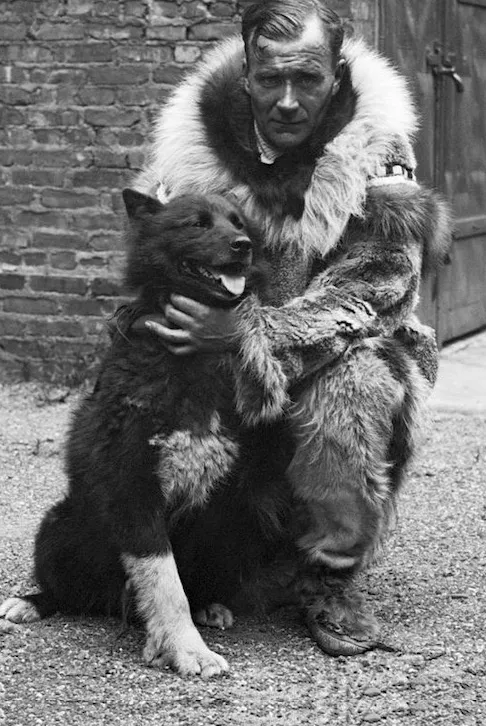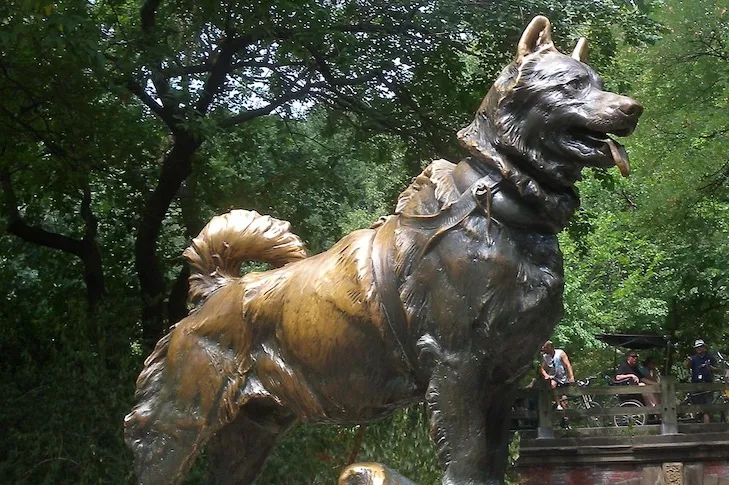In the vast, frozen expanse of Alaska, where the wilderness reigns supreme, stories of incredible courage and endurance are often etched into the landscape. Among these, the legendary tale of Balto, the Siberian Husky sled dog, stands as a beacon of hope and an enduring symbol of heroism. This incredible journey, truly Balto’s incredible sled dog story, chronicles a race against time and nature itself, a desperate mission that captivated a nation and saved a remote community from the brink of disaster. Our exploration delves into the historical facts, the key players, and the lasting legacy of the brave dog whose name became synonymous with unwavering dedication.
The Dire Situation in Nome, 1925
The year was 1925, and the isolated town of Nome, Alaska, found itself gripped by a terrifying public health crisis. Doctors confirmed a deadly outbreak of diphtheria, a highly contagious bacterial infection that primarily affects children, causing severe breathing difficulties and, if untreated, often death. With winter temperatures plummeting to 50 degrees below zero and blizzards raging, Nome was cut off from the outside world. The nearest supply of antitoxin serum, the only known cure for diphtheria, was located in Anchorage, more than 500 miles away.
Travel by plane was impossible due to the extreme weather conditions and lack of de-icing technology. Shipping by sea was halted by the frozen Bering Sea. The only viable path was a treacherous 650-mile overland freight route, known as the Iditarod Trail, which connected Nome to the railroad station in Nenana. This route, typically traversed by dog sled, would take a month in normal conditions – far too long to halt an epidemic that threatened to wipe out Nome’s entire child population. A faster, more daring solution was desperately needed: a relay.
The Great Race of Mercy Begins
To combat the looming tragedy, a monumental effort was conceived: a dog sled relay race, later dubbed the “Great Race of Mercy” or the “1925 Serum Run to Nome.” Over twenty brave mushers, alongside their dedicated dog teams, volunteered for this perilous undertaking. They would brave blizzards, blinding snow, and life-threatening temperatures to transport the precious serum across the unforgiving Alaskan wilderness. Each team would cover a segment of the route, passing the life-saving package from one musher to the next in a desperate bid to reach Nome in time.
Among these courageous participants were two particularly notable figures and their lead dogs. Leonhard Seppala, a revered musher with extensive experience, led a team of elite Siberian Huskies, imported directly from Siberia, choosing his seasoned 12-year-old lead dog, Togo, for the longest and most dangerous leg of the journey. Another musher, Gunnar Kaasen, placed his trust in a younger, less experienced three-year-old lead dog named Balto. The story of the real Balto dog truly began as he prepared for his critical part in this historic relay.
 Balto the sled dog and musher Gunnar Kaasen pose during the Nome Serum Run
Balto the sled dog and musher Gunnar Kaasen pose during the Nome Serum Run
Balto’s Heroic Final Leg
The serum, carefully packaged, arrived at Nenana on January 27th and began its extraordinary journey. Handed off from team to team, each musher pushed their dogs to their absolute limits, battling exhaustion and the elements. Segments ranged from 24 to 52 miles, often through whiteout conditions where visibility was zero. Finally, the precious cargo reached the last team, led by Gunnar Kaasen and Balto.
Despite his relative inexperience compared to Togo, Balto rose magnificently to the challenge. As the team fought through a ferocious blizzard, winds grew so strong they threatened to lift the sled and dogs into the air. Kaasen, blinded by the snow, relied entirely on Balto’s instincts. The courageous dog navigated the team through the darkest hours of the storm, keeping them on course. Just before dawn on February 2nd, Balto and Kaasen charged into Nome, delivering the serum. The entire relay, which normally took a month, had been completed in an astonishing 127.5 hours – approximately five and a half days.
A Legacy Forged in Ice and Snow
The success of the 1925 Serum Run was a triumph of teamwork, endurance, and the incredible bond between humans and their canine companions. While every musher and dog contributed significantly to this life-saving effort—and historical accounts often highlight Togo’s truly epic and perilous 260-mile trek—it was Balto, the lead dog of the final, dramatic sprint into Nome, who captured the public’s imagination. He became the enduring symbol of the heroic endeavor, representing courage, tenacity, and the unwavering spirit of hope in the face of despair. Balto died in 1933 at the age of 14, but his story, like many compelling story in English dog narratives, continues to be shared and celebrated globally.
Balto’s legacy lives on in various forms. Thousands of visitors, especially children, visit a bronze statue erected in his honor in New York City’s Central Park. His preserved body is on display at the Cleveland Museum of Natural History, where a special exhibit details his remarkable story. Every March, dog sled teams from around the world gather to participate in the Iditarod Trail Sled Dog Race, an event that roughly follows the historic serum-run route, ensuring the memory of these heroic dogs and mushers endures. Beyond the historical records, Balto’s legend was further cemented by popular culture. The animated film, released in 1995, brought the Balto movie’s true story to a new generation, igniting fascination with this brave canine hero.
 Bronze statue of Balto in Central Park, New York City, honoring the heroic sled dog
Bronze statue of Balto in Central Park, New York City, honoring the heroic sled dog
Conclusion
Balto’s story is more than just a historical anecdote; it’s a timeless testament to the extraordinary capabilities of dogs and the unwavering spirit of humanity when faced with adversity. It reminds us of the profound connection between humans and animals, and how, in moments of crisis, courage and determination can prevail against seemingly insurmountable odds. His heroism, akin to the diverse narratives found in dog man three stories in one compilations that celebrate the incredible bond between dogs and humans, continues to inspire. The tale of Balto, the courageous sled dog, will forever be etched in history as a powerful symbol of heroism and hope, a reminder that even the smallest among us can make the biggest difference.
For more fascinating insights into the world of canine heroes and dog care, explore other articles on Dog Care Story!
